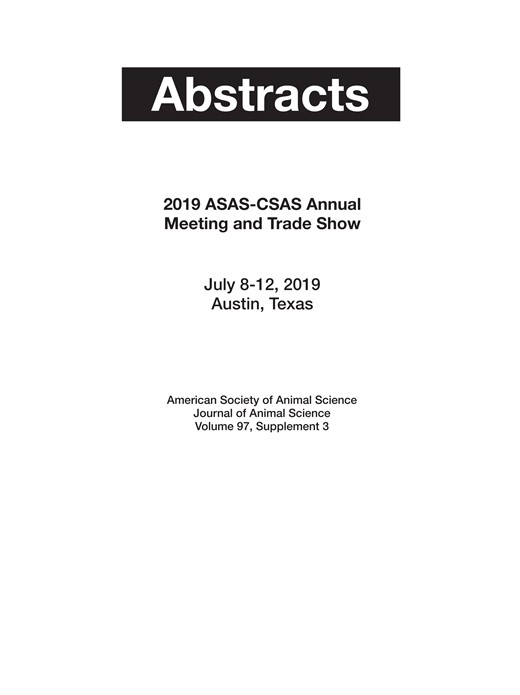-
Views
-
Cite
Cite
Kibeom Jang, Y C Cheng, S W Kim, 126 Evaluation of true ileal amino acid digestibility of fermented soybean meal fed to nursery pigs, Journal of Animal Science, Volume 97, Issue Supplement_3, December 2019, Pages 110–111, https://doi.org/10.1093/jas/skz258.227
Close - Share Icon Share
Abstract
Fermented soybean meal (FSBM) has smaller peptides and reduced anti-nutritional factors compared with those in conventional SBM. Apparent and true ileal digestibilities (AID and TID) of AA in FSBM were measured using both a direct method and a substitution method. Forty eight (24 barrows and 24 gilts) pigs at 7 kg BW were allotted to 4 dietary treatments (n = 12) based on a randomized complete block design with sex and initial body weight as blocks. Treatments includes NFD (semi-purified N free diet to measure endogenous AA loss), NFSB (NFD with 20% FSBM; Genebiotech Co., Ltd. and Nutraferma, Inc), CBD (corn basal diet), and CBSB (CBD at 80% and FSBM at 20%). NFD and NFSB were used to directly measure AID and TID AA of FSBM, whereas NFD, CBD, and CBSB were used to indirectly calculate AID and TID AA of FSBM using a substitution method. Experimental diets included TiO2 (0.4%). Pigs were fed experimental diets for 10 days. Feed allowance was based on 0.09 x BW0.75 kg per day. All pigs were euthanized at the end of the experiments to collect ileal digesta. Diets and ileal digesta were used to quantify TiO2 and AA. Data were analyzed using Mixed Procedure of SAS 9.4. Dietary treatment was the main effect and blocks were random effects. Endogenous AA loss was 2.48 g. When measured by a direct method, AID and TID of Lys, Met, Thr, and Trp were 72.1 and 89.8%, 74.9 and 92.1%, 61.0 and 88.5%, and 72.2 and 92.2%, respectively. When measured by a substitution method, AID and TID of Lys, Met, Thr, and Trp were 64.7 and 84.4%, 60.5 and 77.9%, 36.2 and 57.0%, and 58.2 and 81.0%, respectively. Overall, a direct method showed higher AID and TID AA in FSBM than those measured by a substitution method.





